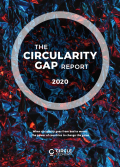
The Circularity Gap Report provides on-the-ground examples from across the globe to illustrate the practical implementation of circular economy strategies and solutions.

This report identifies 25 clean air measures that can positively impact human health, crop yields, climate change, and socio-economic development as well as contribute to achieving the Sustainable Development Goals (SDGs). Implementing these measures could help 1 billion people breathe cleaner air by 2030 and reduce global warming by a third of a degree Celsius by 2050.
This report is the first-ever comprehensive scientific assessment of the air pollution outlook in the Asia and the Pacific region. It outlines 25 clean air measures that could achieve safe air quality levels for 1 billion people by 2030, with numerous benefits for public health, economic development, and the climate.
This report calls for national governments to prioritise compact, connected, and clean cities in order to secure economic prosperity and tackle the climate crisis. The report quantifies the necessary investments as well as the potential benefits available to governments willing to invest into zero-carbon cities and it sets out a six-part action plan on advocating for ambitious, coordinated climate action.
The Green Growth Potential Assessment (GGPA) is a diagnostic tool developed by the Global Green Growth Institute (GGGI) that consists of a combination of data analysis and stakeholder consultation in order to identify and prioritise a country’s opportunities for green growth. This report presents the findings of the GGPA for Myanmar. It reviews in detail the challenges and opportunities across a number of sectors, followed by recommendations for each of the green growth priorities.
